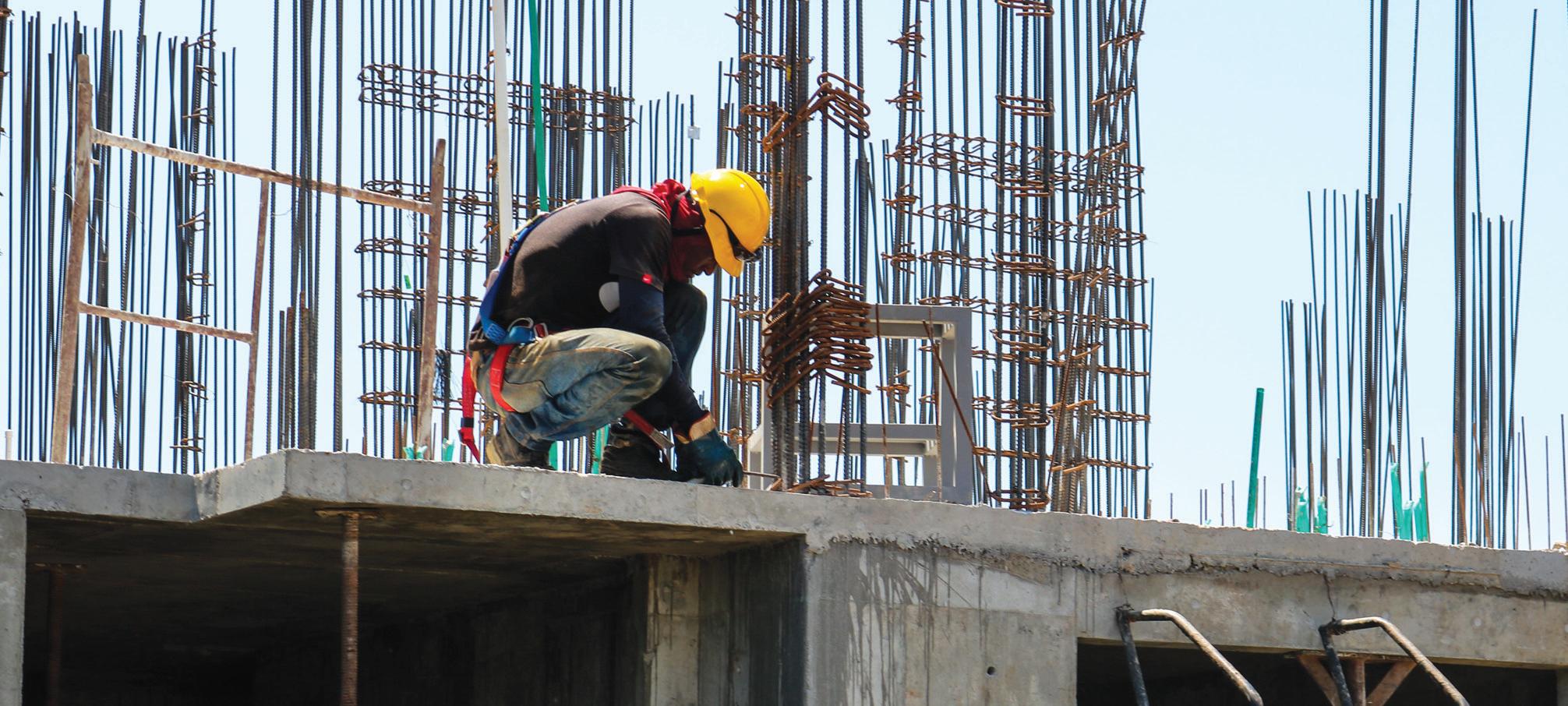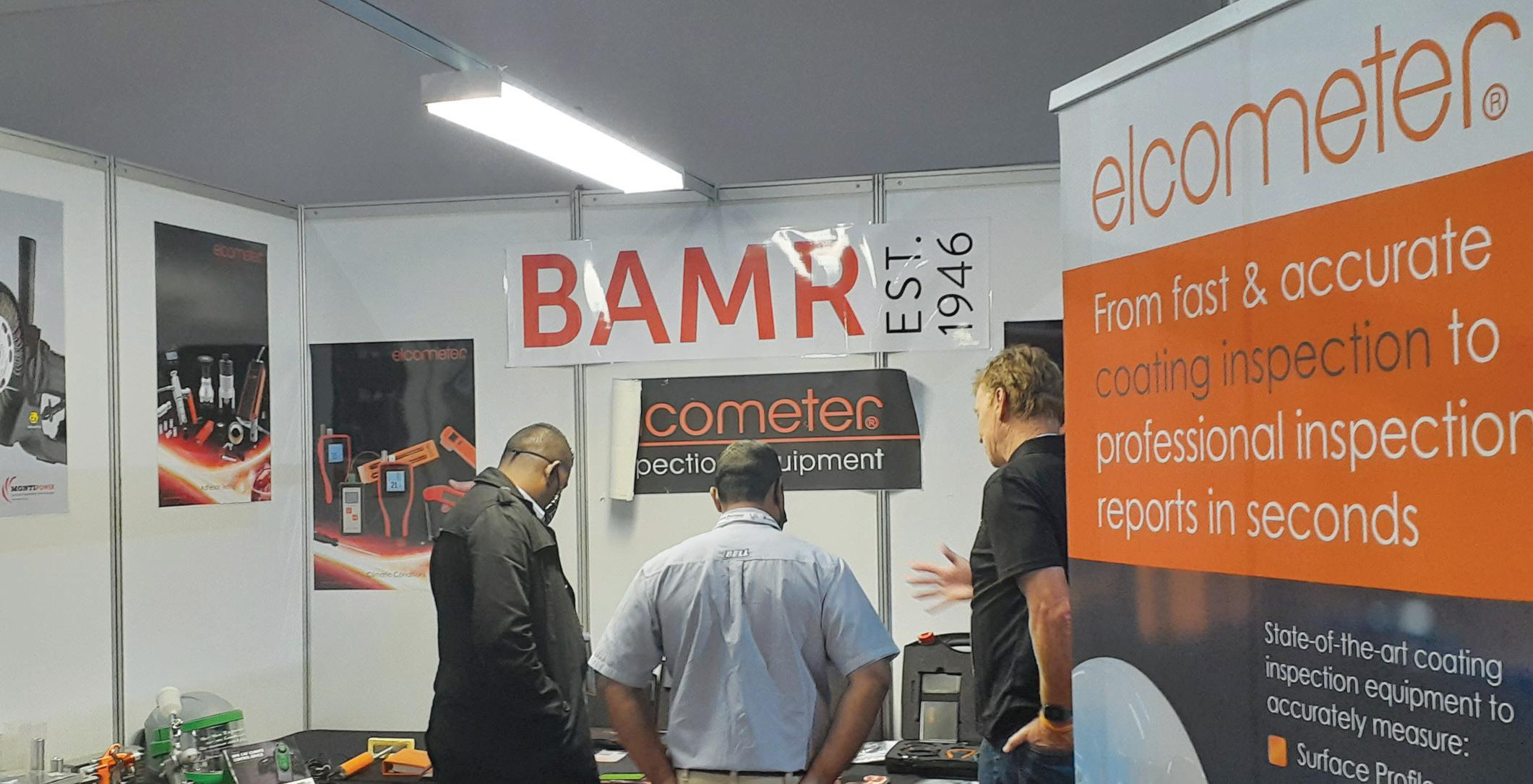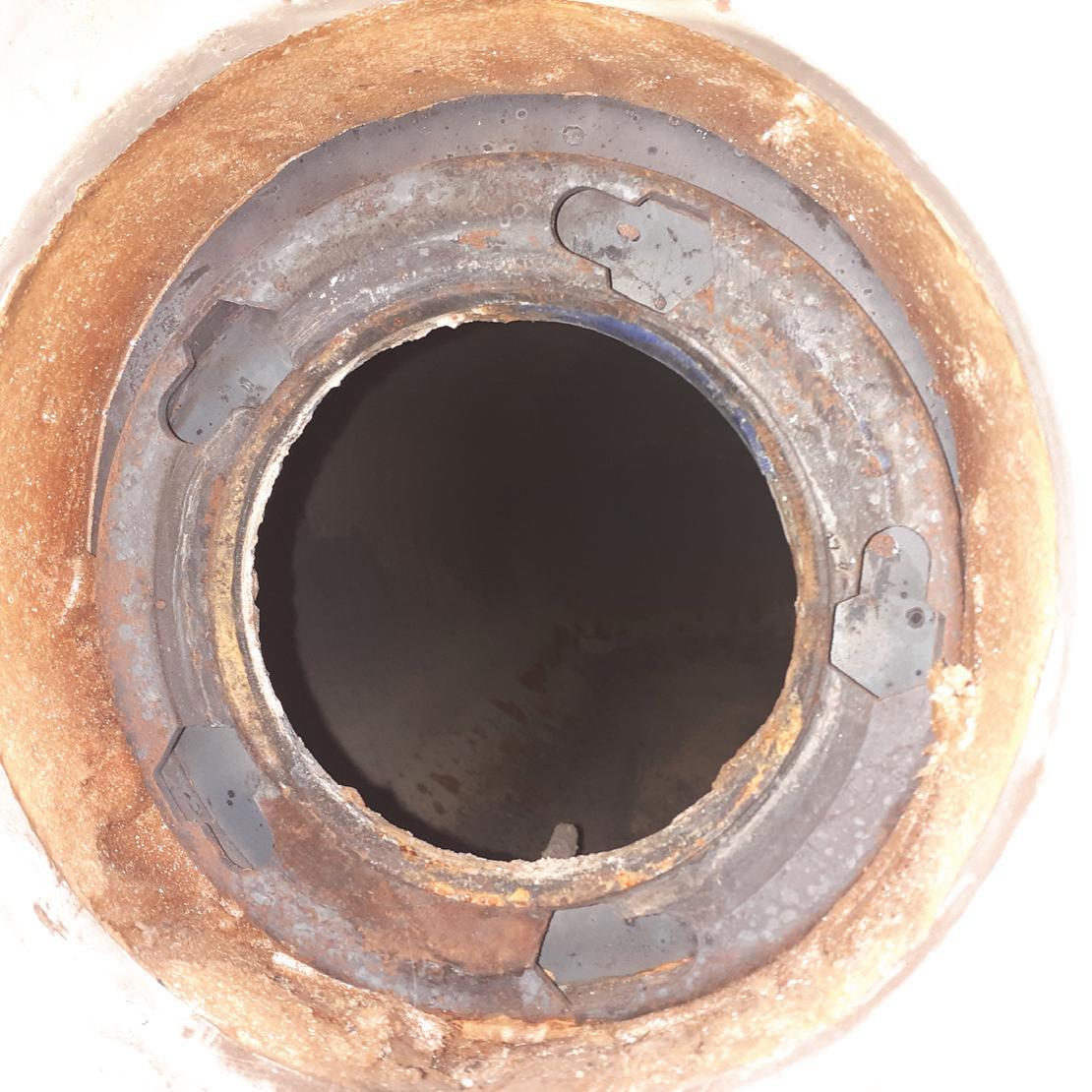
16 minute read
Industry events and exhibitions . . . . . . . . . . . . . . . . . . . . . 13 The dmgEvents Big 5 Dubai
working environments and widely impacting the market and the community.
We all know that women are underrepresented in the construction industry as well as other “ male-dominant “ ones. But we can improve this situation. In my opinion, if construction companies are to successfully implement gender equality at work, they will be better equipped to support and promote this concept in both the marketplace and the wider community because they will be viewed as role models. Accordingly, such firms will improve their reputation, demonstrate their leadership, sow the seeds of moral corporate conduct, promote sustainability in the community, and impose high market standards.
Advertisement
Yes, the construction and engineering sectors play a fundamental role, and I believe that this role is crucial for reshaping the perception of women’s talents in the respective industry.
WHAT CAN THE CONSTRUCTION INDUSTRY LEARN ABOUT ADVANCING INCLUSION AND DIVERSITY FROM OTHER INDUSTRY SECTORS?
I believe the construction industry can successfully and comfortably implement the best inclusion and diversity practices adopted by other sectors. For instance, construction firms can strengthen the sense of belonging at work, provide equal and fair professional development opportunities for all staff, support innovation and creativity among all employees, raise staff awareness of the value of inclusion and diversity, and foster teamwork spirits and cooperation.
If such practices were to be successfully implemented, outstanding results would be achieved, as diversity in the business environment is crucial to fostering innovation and creativity.
Recent studies revealed that the top-performing organizations in terms of gender diversity outperformed their rivals by 21%, while businesses that prioritize fostering diversity in the workplace are viewed as responsible and ethical ones. Another study conducted by Deloitte found that 67% of job seekers view diversity as an important factor when evaluating job offers.
Of course, these are some of the advantages of promoting diversity and inclusion. They can all be applicable to construction companies.
HOW CAN THE INDUSTRY SUPPORT AND INSPIRE THE YOUNGER GENERATION OF FEMALE CONSTRUCTION PROFESSIONALS, AND WHAT CAN MALE CHAMPIONS OF WOMEN’S EMPOWERMENT DO TO FURTHER SUPPORT THEIR FEMALE COLLEAGUES?
To inspire and encourage more women to work in the construction industry, we should focus on female role models and celebrate them. It is crucial to share success stories of women in the industry to encourage other female professionals to engage in this exciting industry. Also, providing training opportunities together with competitive advantages can stimulate and encourage the younger generation of women to join the construction sector.
In addition, male supporters of women’s inclusion must speak up in order to inspire female counterparts to participate in all sectors of the economy; however, competence and experience should always remain the defining factors in the highly competitive market.
The DBWC strongly believes that women are capable of working in all fields and that it is our responsibility to train and sharpen their skills to help them be in a better position to handle all challenges and responsibilities.
HOW DO YOU SEE THE FUTURE OF WOMEN IN CONSTRUCTION IN THE MIDDLE EAST DEVELOPING, AND IN WHICH AREAS DO YOU THINK THE MOST PROGRESS WILL BE MADE?
“Gender equality and diversity in the construction sector in the Middle East are under construction.” It is a work in progress, but I am very optimistic about the future. The upcoming phase will be one of shifting mindsets, innovation, and progress. Therefore, we ought to utilize international forums like The Big 5 to discuss the key role that women can play in driving the growth of the construction sector and highlight their rising participation on all levels.
Women can work successfully as engineers, architects, construction site managers, quality specialists, and other professions associated with the industry. We must all make sure to offer them the chance to prove their skills and unleash their potential. n

The role of inspection equipment in concrete’s longevity
Graham Duk, attending the dmgevents’ Coatings for Africa expo and conference on 4-6 May 2022, offers his perspective on how to preserve concrete for a longer life by using the appropriate inspection equipment.
“In terms of inspection equipment, the first step our equipment would be involved in the laying of cement would be as the structure is being built and rebar put in place within the shuttering. Often when the concrete is being poured the rebar can potentially move. The Elcometer 331 Concrete Covermeter can be used to check that the reinforcing bar is where it ought to be. The cover should be between approximately 50mm and 70mm thick, and the repercussions of the cover not being the correct thickness can be seen in the sort of rust-looking marks you often find on old buildings or bridges. That is the rebar rusting where the cover is insufficient,” explains Duk.
BAMR has an instrument – a concrete test hammer - which tests the hardness of concrete. Its importance is as a quality control tool, by indicating whether or not the concrete has been mixed and cured correctly. This spring-loaded impact device strikes the concrete and depending on how far it rebounds that translates into the Mpa hardness of the structure.
“Coating of concrete is usually more for aesthetic reasons than to protect the concrete. We have an instrument gauge to measure the thickness of the coating – to determine whether the contractor has done their job properly or cut down the number of coats to save costs, because visually there is usually little difference.
“Any metal - such as rebar, but more significantly so in the case of say a ship or pipe - that is not coated correctly is going to start rusting earlier than expected.
“Then there are moisture meters – before applying the coating one has to make sure that the plaster or concrete has cured sufficiently and is dry enough so that it can be coated,” says Duk. “Otherwise the coating may peel and not adhere correctly. We have an adhesion tester for after the coating has been applied to a substrate such as concrete to ensure the coating can stick to the concrete to a force of the correct Mpa which would usually be around 3 Mpa. If it doesn’t, then there is something wrong with the application. This applies equally to walls and flooring.”
While most of these tests are done at the time of installation or shortly thereafter, they also have relevance for building on additional floors. “The consultants would need to establish whether the walls are sufficiently strong to support another story. The cover meter establishes the size of the rebar and strength of the wall.”
Duk explains that its testing kit is of particular relevance to painting manufacturers and contractors, given that “when something goes wrong they are the first people to be blamed as being in error at the time of application, when in fact it may have been the underlying concrete surface”. It may be that the concrete substrate was not prepared correctly or there was excessive moisture. What is ideal in this situation is a climate monitoring device which can be placed on location throughout an application process and shows whether the climate at the time of applying the coating was within specifications, usually determined by the paint manufacturer.
“South Africa is well behind the US, for instance, from a legal point of view – because the likelihood of lawsuit will determine how a contractor performs. n
Not just rust
By Eamonn Ryan
Speaking at dmgevents’ Coatings for Africa expo and conference on 4 May 2022, Greg Combrink, Immediate Past President of The Corrosion Institute of South Africa gave a presentation on rust and corrosion, its impact on metal embedded in concrete, as well as on other industrial and consumer materials such as in plumbing infrastructure.
The definition of corrosion is a chemical or electrochemical reaction of a material with its environment. In the broadest sense of this definition, it applies not just to metals, but any material including plastics.
“Corrosion – or in the case of iron and steel, we call it rust – is everyone’s problem. That’s because the cost of corrosion to the global economy is astronomical. Corrosion is the most pernicious occurrence known to mankind – more insidious by far in terms of loss than many natural disasters. Research has shown the direct cost of corrosion worldwide (which is the replacement of materials and their installation) is about 4% of global GDP lost every year. In total, this has been estimated at US$4 trillion each year,” says Combrink.
“Wits University did some local research in the 1990s and found the South African equivalent loss to be higher at 5.2% of GDP – which is equivalent to the revenue of the entire South African mining industry. This amount of approximately R260 billion (or R4 400 a year for every resident of South Africa) is lost every year – just as a direct result of corrosion. A quarter or more of this amount could be saved just by using existing technology
“In addition, there are also even larger indirect costs such as interruptions in factory production, as well as environmental damage through carbon dioxide produced in replacing the steel, or toxic liquids escaping from a tank or pipeline which has sprung a leak from corrosion. The rule of thumb estimate is that the indirect cost is about double the direct cost. There’s also considerable loss of goodwill that can come from a leak from a sewer drain that subsequently leaks into our rivers,” says Combrink.
PREVENTATIVE ACTION
“One of the methods to reduce corrosion is by the application of an organic coating. Paint is applied not just for the sake of appearance, but also as a protective barrier against the environment.
Combrink adds: “We promote research and recognise innovations in the field of corrosion prevention. It’s not just metallurgy and chemistry – it involves electrical engineering as well. In civil engineering, if the rebar inside a concrete structure starts to corrode it creates an increase in volume which causes the concrete to crack, leading to consequences as severe as the building collapsing.” He notes that concrete has reinforced steel bars on the inside, which can corrode as a result of the lowering of the pH of the concrete by attack from CO2 for example. “Concrete is cast about this rebar and in between the rebar cage to fill all the gaps. Concrete is a composite material, comprised of cement, water, aggregate and steel. It never really dries out completely – holding about 25% to 30% water, only after 100 years or so dropping to about 12%.” The pH of concrete is highly alkaline, he explains. Steel embedded into concrete reacts to form passive layers on the surface, which is actually corrosion. “It forms an oxide layer which tenaciously clings to the surface and prevents any further interaction between the surface and the environment. If it gets damaged it in a certain area, it can either selfheal and re-form, or can form a localised corrosion spot. This is an extremely dangerous type of corrosion, because if one had to lose five grams of material over an entire surface one could deal with it - but to lose five grams only in one spot causes a lot more damage to the extent the entire support structure will be at risk of collapsing.”
With time, and with exposure to different environments, particularly carbon dioxide and chlorides, the pH level of the concrete lowers. The steel ceases to be passive and the volume of rust increases. “The volume increase inside the steel now places the concrete prism under tension. Concrete is good under compression, but not under tension.”
“Where there was previously a thin bar, because it’s corroded it increasingly pulls the concrete apart, developing spalling – or cracks in concrete through to the surface. Once that occurs, other contaminants and water can get in accelerating the corrosion. Chlorides also tend to break down the

passive layer, so if you have chloride in your concrete mix, and unless you have additives to inhibit it, you will get a similar attack on the rebar and expansion of the rebar volumes,” Combrink adds.
Some of the accelerants added to concrete to make it cure faster are chloride-containing materials. “It’s a balance – one wants it to cure faster, but not to corrode. Typically, we build buildings to last 100 or even 200 years. Acid rain also plays a part in attacking concrete and other structures. “It’s exothermic - it gives off energy spontaneously. Gases are emitted from some various large industrial enterprises which accelerates corrosion.
Combrink explains that if one does nothing, corrosion is inevitable as it’s thermodynamic. Everything wants to get into the most stable state, including the rebar inside the concrete. The process of making steel is to dig iron ore out the ground as an oxide where it’s been there for billions of years in the most stable state. It is put into a furnace, carbon or coke added and heated to reduce it to pig iron, which in turn is converted to steel. All of this adds energy to the steel.
“And all it wants to do is return to its lowest level. The same thing happens with the rebar inside concrete – it wants to return to the lowest energy level. In the particular environment of concrete with its high pH, it’s passivated and stable. But if that state changes either through carbonation or chloride ingress, it reacts to corrode (return to its natural lower energy state).
This occurs especially at the coast, where you’ve got chlorides blowing off the sea embedding into the concrete and attacking the rebar. It is also the case with roadways, carbon dioxide formation from burnt fossil fuels gets into concrete in a process called carbonation though its typically porous matrix.
Typically, the coverage of rebar at the coast must be a minimum of five centimetres. “That’s in the design stage, but when you get to the actual practical implementation of a crane lifting the rebar, things move and you sometimes don’t get the total coverage wanted. So, one should design for six centimetres, and then you have more ‘play’ to work with.
“There are also other methods of doing it, such as the use of inhibitors. One type of inhibitor called a vapour phase corrosion inhibitor (VpCI) even has the ability to protects steel both above and below the waterline. Such VpCIs, when dissolved in water will vaporise from the water saturating the air the phase above it resulting in protection from corrosion both in the liquid and in the air. We can do the same with concrete by adding inhibitors to the mix.”
That concrete inhibitor technology is owned by Cortec, in the form of a migratory corrosion inhibitor is added to the concrete mix. It congests the pathways of where the aggressive agents such as chloride would start infesting the porous structure, slowing the corrosion process.
To extend the life of concrete against the inevitable process of corrosion and decay, one can add inhibitors in the premix, or apply an electrochemical technique called cathodic protection. Because there’s 30% moisture in all concrete, one can now make that rebar to be a non-corroding material by forcing a charge onto the surface where a corrosion cell has formed. Concrete’s moisture level means the concrete itself provides the electrolyte needed. “For corrosion to occur via an electrochemical process (which is most common), the corroding area of the metal being attacked is the anode that dissolves away while the noncorroding area is where the cathodic reaction occurs on the surface and no damage is evident. There has to be an electrical conductor which can conduct charge by electrons and a return path usually an electrolyte to close the loop for the charge. In practice if a water droplet from rain forms on exposed steel, one part of that steel under the water drop becomes the anode and corrodes and another part becomes the cathode that doesn’t get attacked by corrosion.” Combrink adds.
Solutions include painting the rebar with a resistant coating before placing it in the concrete. Few people do it, and Combrink says a ‘cultural change’ would first need to occur.
The Corrosion Institute believes there exists “a huge gap for the restoration of concrete in buildings”. Combrink explains: “You can do more than just add MCIs to the premix: you can come back to a building afterwards and retroactively apply it every three or four years to the outer surface on the building. It will seep in and stop any corrosion taking place on the rebar.”
The Corrosion Institute’s objective is to raise awareness of corrosion and also to provide training so that companies can monitor their own plant, equipment and infrastructure, thereby reducing the economic impact of corrosion. It is also a networking organisation for people to exchange ideas on their corrosion challenges. “By raising awareness, we aim to get people to understand that damage caused by corrosion is not inevitable. There is an engineering aspect to designing infrastructure, and by implementing appropriate methods there are to stop corrosion ensure it will last as long as is required and will not fall victim to it,” says Combrink. n

How to tackle non-structural concrete repairs
By Jan de Beer, on behalf of Cement & Concrete SA (CCSA)
The durability of concrete is exceptional and well-known but sometimes concrete casting defects and other operational errors can cause unsightly superficial surface damage. Here Bryan Perrie, CEO of Cement & Concrete SA (CCSA), provides guidance on the basic principles of repairing such nonstructural problems.
Firstly, repairs to new concrete should be done as soon as possible after the formwork has been removed to reduce differential shrinkage and improve the bond between the original concrete and the repair material. Before doing the repair, all dust and detritus must be removed from the surface to be treated by, for example, washing vertical and near-vertical surfaces with clean water. For manual repairs, suitable for small areas, feather edging – trying to seamlessly blend the repair material into the existing concrete – should be avoided. The outline of a repair should be cut with a masonry cutting disc or saw to ensure a square edge.
Good adhesion between the original concrete and the repair material is essential and, to ensure this, the surface of the original concrete must be strong, rough and clean. Any loose or weak material must be removed with sharp chisels, driven by relatively light hammers. But it is important to remove the unwanted concrete in such a way that the remaining concrete is not badly damaged. Sand‐blasting, which can remove small volumes of concrete, is an excellent means of achieving a rough surface free of loosely adhering material.
In cases where the repair areas are large (say over 0.1m2), and especially where persons could be injured by falling fragments, it is strongly recommended not to rely solely on adhesion between repair and background concrete but to provide mechanical fixing. Such fixing Bryan Perrie, CEO of Cement & Concrete SA (CCSA)









